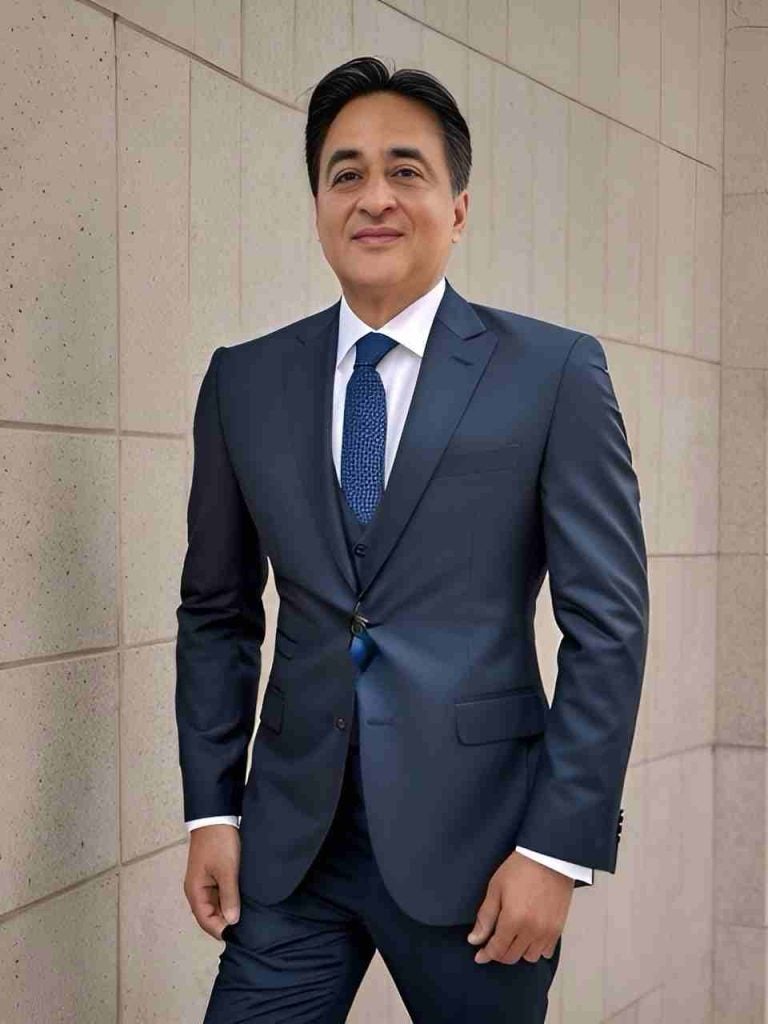The Private Banker International Global Wealth Summit 2016, held in Singapore in October, brought together pivotal private banking industry leaders to engage in much needed discussion on evolving business models and the use of technology, the impact of fast evolving regulations, inter-generational wealth transfer and the unique proposition on ultra-high-net-worth clientele. Xiou Ann Lim reports on key insights from the day
SESSION 1: Mastering a fine balance: Costs, complexity and customer-centricity
Panel Members:
Arnaud Tellier, Head of Investment Services, Asia, BNP Paribas Wealth Management
Michael Blake, Chief Executive Officer Private Banking Asia, Union Bancaire Privée
How well do you really know your competitors?
Access the most comprehensive Company Profiles on the market, powered by GlobalData. Save hours of research. Gain competitive edge.

Thank you!
Your download email will arrive shortly
Not ready to buy yet? Download a free sample
We are confident about the unique quality of our Company Profiles. However, we want you to make the most beneficial decision for your business, so we offer a free sample that you can download by submitting the below form
By GlobalDataPeter Scott, General Manager Asia Pacific & Member of the Executive Board, Avaloq
Samuel Lin, Head of Retail and Wealth Management, Taishin Bank
Moderator:
Meghna Mukerjee, Editor, Private Banker International
The private banking industry is undergoing tremendous change – it is continuing to face challenges such as fast e regulatory requirements, tight profit margins as well as loss of clients’ trust and loyalty. How can private banking players thrive in this demanding landscape? Four heads of businesses weighed in.
Arnaud Tellier – Head of Investment Services, Asia at BNP Paribas Wealth Management – concurred that the private banking industry is facing a lot of challenges – not just within the last 12 months – and he believed that many more difficulties lie ahead. Sharing that the biggest challenges for BNP Paribas are controlling costs, the transfer of intergenerational wealth and digital transformation, he added that the global private bank does not necessarily have the flexibility and agility that fintech firms do. “We have legacy systems that were not made for the digital layer, but we have to find ways to adapt quickly,” he said.
Peter Scott – General Manager Asia Pacific & Member of the Executive Board at Avaloq – empathised with this challenge: “The scale, size and complexity of these companies actually inhibit their capabilities to deliver the services that they need to be differentiating,” he said. Scott further said that the question he gets asked most often as a technologist is ‘what’s the lowest cost?’, observing that everyone wants to pay little in exchange for maximum impact. According to Scott, the ideal would be “a progressive renovation approach, where you can progressively renovate your system”.
Agreeing that size does not always prove to be advantageous, Michael Blake – Chief Executive Officer Private Banking Asia at Union Bancaire Privée – said: “Big is not necessarily beautiful.” He added that assets under management (AuM) numbers could be slightly misleading as the main determinant of success, because “there are banks with relatively large AuM balances that are not particularly profitable”. “There are also other banks with smaller AUM balances, which are highly profitable,” he said.
“Of course, total AuM cannot be the only criteria,” said Tellier. “But we all make more or less the same return on assets. So, size does matter,” he opined, adding that there are fixed costs that need to be paid – back-office operations, an army of compliance officers and IT systems. “These are by-and-large fixed costs. If we want to provide the breadth of services to clients, size remains a large factor,” he concluded.
Blake believed that the focus needs to be on productive assets rather than on AuM as a blanket measure. He disclosed that clients look for three things in a successful private bank – a relationship manager (RM) that they can trust over the long term, stability and strength in the balance sheet, and liquidity as well as delivery of solutions in a flexible way. “They are pretty generic qualities – it’s easy to say it, but I’m not sure many banks are actually delivering that,” he observed. He also noted that the industry currently has universal banks that offer an institutionalised relationship as a one-stop shop on one end of the spectrum, and boutique private banks – where RMs continue to be the absolute centrepiece of the service proposition and delivery – on the other.
With such varied business models offering and different propositions – how can a business stand out from the competition? According to Samuel Lin – Head of Retail and Wealth Management at Taishin Bank – the only way to do well in private banking is to make sure that clients are making money and not just preserving it. “Clients always have the same demand for products that offer high yield and little risk. You almost have to bravely tell them that there is no such thing,” he added. “We ask our RMs if they are prescribing products that are doing well or if they’re just selecting products that have high fees,” he revealed – cautioning against such practice.
Opening remarks – Ernest Leung, Head of Wealth Management Singapore, BNP Paribas Wealth Management
“The industry has undergone transformational changes in the last decade. Our traditional modus operandus is battling against a myriad of different forces – regulatory oversight, margin pressure, consolidation and demographic shift – just to highlight a few.
Market volatility and economic uncertainty continue to increasingly add pressure to an industry already brimming with challenges. In addition, events such the recent Brexit vote, US elections and the pace of interest rate hike by the Fed are casting uncertainties on financial markets globally. Private banks, notwithstanding secular growth, have been affected by very challenging investment landscape and low or negative interest rate environment. All in all, 2016 is a year for industry players to develop a rational view about business strategies and aspirations.
A number of industry surveys affirmed that Asia has enjoyed the fastest pace of growth for the last two decades. However, return on investment is lacklustre due to low-yield environment on the macro front this year. Therefore, tackling rising cost despite margin compression remains one of the key issues on our watch list.
Clients have become more cautious and expectations in terms of yield on investments are toned down. Instead, they are seeking more guidance and direction, not only on investments, but also on family philanthropy, retirement, succession and estate planning and less reliant on transactional focused products and services. Clients are increasingly expecting wealth mangers to play a more active role in managing their portfolios, with full accountability in advisory services and execution capabilities.
Not only is customer centricity a buzz word, it is reality. The value of customer centricity goes beyond learning customer attitude and behaviours to provide relevant solutions. It re-defines business models, more robust segmentation and data analytics to design an effective customer experience, harnessing the power of digital in an integrated strategy and inculcate a culture of innovation within the organisation that will drive growth and competitive advantage. How to evolve and enhance businesses to thrive in today’s changing environment and delivering value to clients are critical.”
SESSION 2: Managing young and old money right – Deep dive into the world of investments
Panel Members:
Adam Cowperthwaite, Managing Director, Head of Equities – Asia Pacific, Citi Private Bank
Harry Ng, Head of Wealth Planning Strategy & Solutions – Asia, Nomura
Prashant Bhayani, Chief Investment Officer, Asia, BNP Paribas Wealth Management
Winston Kassim, Vice President & Special Projects Advisor, Office of the CEO, Royal Bank of Canada
Moderator:
Lim Xiou Ann, Asia Editor, Timetric
The new generation of HNWIs are accumulating wealth at a fast pace. At the same time, legacy wealth needs to be managed with utmost competence. These two segments may sometimes differ in terms of risk appetite, autonomy in managing their own wealth and knowledge on investments. Private banks need to personalise their approach and strike a fine balance in catering to the needs of these different segments. How do they differ and what should private banks take into consideration when devising strategies to better serve them?
According to Harry Ng – Head of Wealth Planning Strategy and Solutions Asia at Nomura – the second generation of HNWIs, who inherited or created their wealth – are not as conservative or reserved as the older generation. Apart from assessing risk quite differently, he adds that they tend to be more open to the various opportunities they see in the market and seek information that they don’t have access to themselves.
Adam Cowperthwaite – Managing Director, Head of Equities in Asia Pacific at Citi Private Bank – agreed. Adding to Ng’s earlier point, he observed that many of the younger entrepreneurial clients tend to be more demanding and more process-driven about how they invest their wealth. “They also tend to be well-informed, which means that the willingness to look at a wider range of investments is higher,” he says. “But at the same time, the scepticism about what those investment are able to provide might also be higher,” he warned. This is why Cowperthwaite believes that advisors will have to work harder to get ideas across to quell the investor’s scepticism.
Meanwhile, Winston Kassim – Vice President & Special Projects Advisor, Office of the CEO at the Royal Bank of Canada – spoke about digital touchpoints. He said that not only does the younger generation want more digitally sophisticated tools, they also want more enriching ways to manage and invest their money. In this respect – he said – communication is key. Citing chatbots as an interesting example, he shared that Kasisto has partnered with RBC and DBS to provide chatbot technology, which allows customers to track their investments in a fun and intuitive way. “Just as many banks now have apps, they will one day have bots – including private banks. Yet, only 20% of wealth managers believe their clients are interested in this,” he said.
Apart from digital offerings, Kassim believes that the younger generation of HNWIs are also more socially aware. “They expect their wealth managers to be good corporate citizens and help develop their own philanthropic strategies,” he said.
How then can private banks devise strategies to better serve all client segments? Apart from meeting and managing these expectations, Prashant Bhayani – Chief Investment Officer, Asia at BNP Paribas Wealth Management – said that understanding what other investments clients hold with other institutions is also something to take into consideration. “If you’re advising them on something they already have and you’re doubling their exposure in that area, you’re not really achieving much,” he cautioned. “Knowing more about your clients before you meet them helps you identify what to flex on the investment side,” he advised.
Another aspect to consider when managing clients’ portfolios is removing investments that aren’t working for them anymore. Cowperthwaite observes that the industry excels at putting things into clients’ portfolios. “But what we’re not very good at is getting the client to take an investment out of their portfolio at the tail-end of an investment opportunity – lightening up on positions that are not performing and removing things from the portfolio that the client doesn’t have any conviction in anymore,” he pointed out. “We need to get better at this as an industry,” he concluded.
SESSION 3: Segmentation supremacy: Serving the ultra-wealthy
Panel Members:
David Varley, Chief of High Net Worth & Wealth Structuring – Asia, Sun Life Hong Kong
Ernest Leung, Head of Wealth Management Singapore, BNP Paribas Wealth Management
Nadav Lehavy, Managing Director – Singapore, Sandaire
Oliver Williams, Founding Member and Head, WealthInsight
Moderator:
Lim Xiou Ann, Asia Editor, Timetric
Asia-Pacific has now surpassed North America in the number of HNWIs and the collective HNWI wealth. Through appropriate segmentation and strategies targeted at specific groups, private banks can gain more wallet share from wealthy clients, create loyalty and add essential value to their proposition. But first, how do the ultra-wealthy differ from HNWIs and what do they look for when selecting wealth managers? A private bank, family office, insurer and wealth intelligence provider share their views.
Ernest Leung – Head of Wealth Management Singapore at BNP Paribas Wealth Management – said that clients look for exotic ideas and things that are not out in the market. From private banks – they expect creativity, access to information and markets as well as executional capability. He shared that his mega-wealthy clients often have their own in-house investment expertise either in the form of a gatekeeper or family office set up – so, they go to private banks with a specific mandate and cherry-pick them according to their individual expertise.
From an insurance perspective, David Varley – Chief of High Net Worth & Wealth Structuring Asia at Sun Life Hong Kong – added that it boils down to flexibility. He shares that the UHNW families want more flexibility, especially when it comes to holding assets within insurance – which is really a burgeoning market and something that’s growing very quickly. “They’re holding a great deal of their wealth within some of these insurance products, whether it’s for succession planning or growing their wealth. They have a greater breadth of assets that banks can’t hold and there is a greater need for a broad range of investments,” he said.
But even after considering these points, Oliver Williams – Founding Member of WealthInsight – cautioned against over-segmentation: “They’re not just defined by their wealth but a whole range of other factors beyond their wealth. There’s a problem with over-segmenting – people can be too reliant on segmentation, especially in the HNW segment.” He added that the higher up the wealth chain you go, the more they count as an individual. “So, we have to look beyond that and just concentrate on the person,” he advised.
However, Leung points out that the purpose of segmentation is that private banks are trying to offer the most relevant products and services at the right time to the client and segmentation is a method by which they try to classify that need. For example, he shares that behavioural segmentation – which looks beyond their liquid net worth – is one type of information that is useful to private banks, which relationship managers are privy to. Much of the information – whether related to transactions, products or risk profile – is available, according to him. But how can private banks marry this static data together with behavioural data? “Everything that happened prior to a transaction and issues that were discussed – are they being used from an institutional perspective? Communicating all that to the institution is both a requirement as well as a challenge,” he said.
Another way to better serve the needs of UHNWIs is to approach them with a very bespoke and customised service, said Nadav Lehavy – Managing Director of Singapore at Sandaire. “We are quite modest in terms of scale as compared to private banks,” he admitted, which is why they prioritise the quality and depth of relationships with their clients. “Our strategy and what’s important is to discern from the start whether we are a suitable solution for what they are looking for,” he revealed.
On the other hand, BNP Paribas is a full-fledged bank – which allows them to service their clients from a corporate banking need. The key success factor – according to Leung – is knowledge and proximity to clients. “We’ll be there to capture their private banking needs due to proximity, as we familiarise ourselves with their business and familial needs,” he added.
Leung points out that most of the HNWIs in Asia are probably over-prospected and overbanked. “Having a wide range of products and being able to package and showcase them to advisors of the wealthy at the right point in time gets a foot in the door,” he advised.








